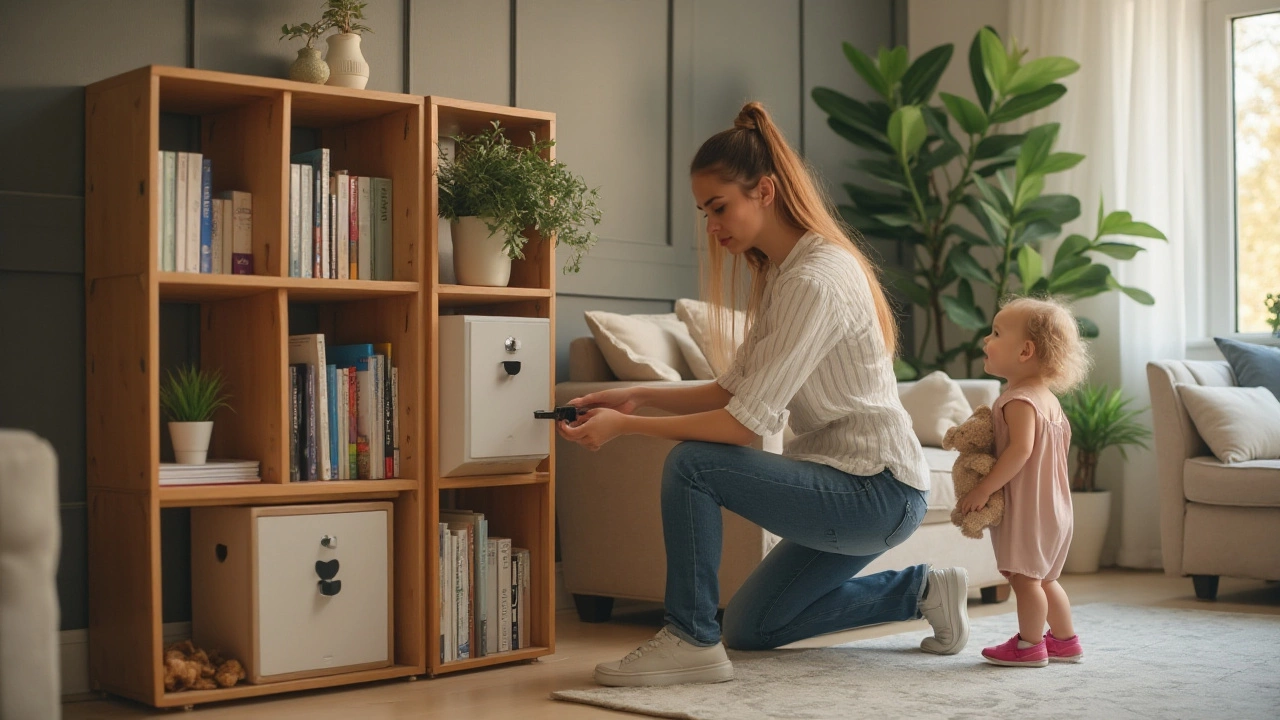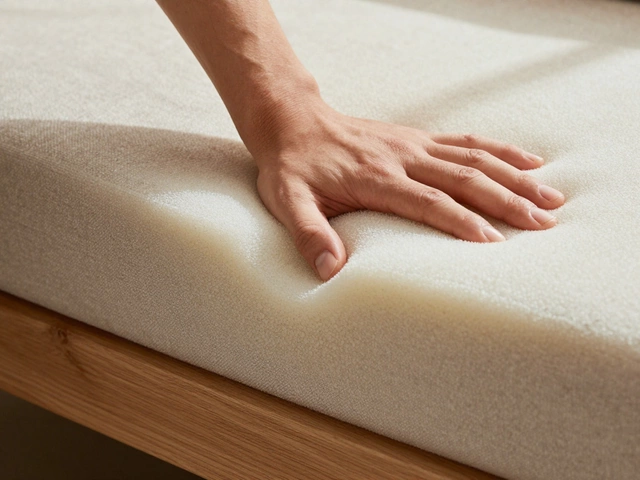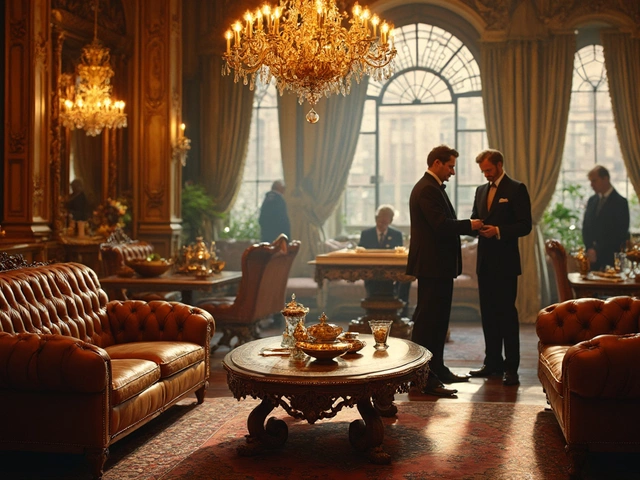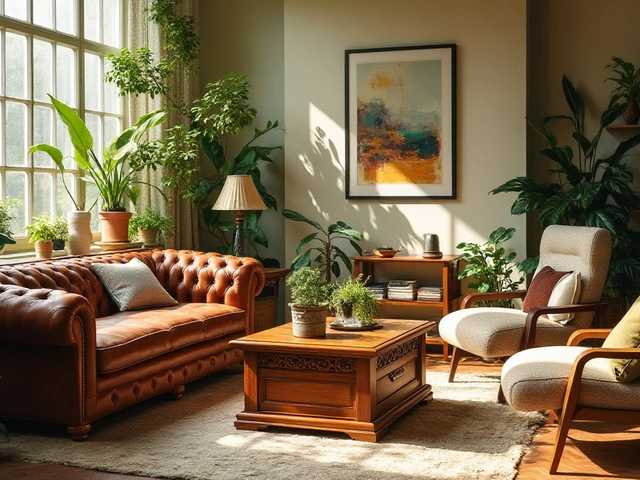Bookcases add a lot more charm and organization to any room, becoming a fantastic way to display your collection of books or cherished ornaments. Yet, these freestanding structures can often become a safety concern if not properly secured, especially in homes bustling with cheerful kids or pets. Ensuring that your bookcase is anchored firmly isn't just a matter of safety—it's also about preserving the beauty and function of your space.
In this article, we'll dive into practical strategies to keep your freestanding bookcase steady, safe, and in harmony with your home's style. Whether you're a homeowner or a renter, you'll find methods tailored to your circumstances, ensuring that your space remains safe without compromising on aesthetics. Join me as we embark on this journey, transforming potential hazards into secure, stylish storage solutions!
- Why Secure a Freestanding Bookcase
- Tools and Materials You Need
- Step-by-Step Guide to Securing
- Special Considerations for Renters
- Creative Solutions for Stability
- Maintaining Safety and Aesthetics
Why Secure a Freestanding Bookcase
Visualize your favorite room, with its warm, inviting ambiance, adorned with a beautiful freestanding bookcase. This elegant piece not only holds your much-loved books but also personal treasures, knick-knacks from travels, and framed family photos. Yet, what many don't realize is that without proper securing, these freestanding bookcases can pose significant risks. Their imposing size can lead to tipping accidents, potentially endangering young children, active pets, or even adults reaching for high-up items. It's worth noting that according to the Consumer Product Safety Commission, furniture tip-overs result in injuries to thousands of individuals annually, largely preventable through proper anchoring techniques.
Securing your bookcase is about more than just preventing accidents, though; it's also about maintaining peace of mind. Imagine the quiet of the evening shattered by a loud crash, or the hurried panic if you see a pet brushing against an unsecured shelf. These scenarios may seem dramatic, yet they happen frequently enough to warrant serious consideration. Ensuring safety doesn't automatically mean compromising your interiors' stylish look, as many worry about the intrusive appearance of hardware on their meticulously designed spaces. The good news is, with careful planning and the use of modern solutions, you can maintain both safety and aesthetics.
For families, especially those with little ones who see bookcases as climbing adventures waiting to happen, securing your bookcase becomes even more critical. It's interesting how something as simple as a tether strap can prevent a multitude of accidents. For renters, the dilemma often extends to landlords' regulations regarding modifications, which makes securing furniture more complex. However, there are non-invasive solutions that work effectively without leaving marks. A quote from the Home Safety Council puts it best:
"Safety is about the measures you take to avoid the preventable,"urging actions that turn potential mishaps into stories of precautionary success.
Your prized freestanding bookcase should be a centerpiece of joy and not a hidden source of worry. By understanding the importance and adopting simple but effective security measures, you're investing in both the safety of your loved ones and the integrity of your household items. This not only adds to the longevity of the furniture but also significantly reduces accidents—making home not just where the heart is, but where security and serenity reside in peaceful coexistence.
| Stat | Influence |
|---|---|
| Annual casualties due to furniture tip-overs | 25,000+ |
| Percentage preventable by securing | 90% |
Tools and Materials You Need
Before you begin securing your freestanding bookcase, it’s crucial to gather the right tools and materials. Not only does this ensure safety, but it also makes the process more efficient and seamless. When you have everything ready from the get-go, the task becomes less of a chore and more of an engaging project. So, let's talk about what you'll need to get started. To anchor your bookcase securely, an electric drill is often essential. It allows you to install screws into both wood and walls effortlessly. Depending on the wall type, have a set of drill bits handy, which can vary from wood to masonry bits if you’ve got concrete or brick. You will also need sturdy brackets or angle braces—these are the heroes that provide added strength to keep the bookcase from tipping over. Many people find adjustable brackets useful because they offer flexibility in alignment, especially if the floor isn't perfectly level.
Apart from these, acquiring furniture safety straps will help in places susceptible to earthquakes, and it’s highly recommended for households with young children who might be tempted to climb. A spirit level is indispensable to ensure your bookcase stands evenly and straight. A measuring tape isn't just for checking the size of the space, but also to help position your brackets accurately. When securing to a wall, make sure you’ve got suitable wall plugs and screws, since not all walls can take standard hardware. Bookcase safety involves using studs where possible, so a stud finder could be a wise investment to locate those sturdy spots behind drywall.
Types of Anchors and Brackets
Understanding the types of anchors is beneficial to choose what best suits your needs. Metal brackets are robust and ideal for wooden surfaces, while plastic brackets offer solid support for lighter designs. There are options like earthquake straps made specifically for places prone to tremors. These come in various lengths and can be tightly secured both at the top and middle for extra protection. For rental properties, where making permanent changes might not be possible, you could consider tension poles. They provide a no-drill alternative, using pressure against the ceiling and floor to stabilize a bookcase.
According to a study by Safe Home Products, "Properly anchoring furniture can prevent 30-50% of furniture tip-over injuries."
One might wonder why the fuss over finding the proper materials. It’s quite enlightening to imagine a bookcase filled with treasured books collected over years—each book a portal to different worlds and times. A little foresight and preparation easily prevent these homely portals, overstocked with memories and narratives, from becoming hazards. In fact, securing the bookcase isn't just about safety but also about preserving your personal library’s integrity. Whether or not you choose traditional brackets or opt for innovative systems like magnets, the right tools and materials form the backbone of a safe and stable bookcase.
Step-by-Step Guide to Securing
When it comes to securing a freestanding bookcase, the process involves more than simply setting it up against the wall. It's essential to ensure that your trusty bookcase won't give in to the playful tugs from your energetic kids or the whimsical curiosity of your pets. Anchoring it well can prevent accidents and protect your treasured collections from crashing to the ground.
Let's start by clearing the area around the bookcase. Make sure there's ample space to work comfortably. You’ll need some basic tools and materials: a stud finder, anchors or brackets, a good set of screws, and a reliable drill. If you're lacking any of these, a quick visit to your local hardware store should set you up nicely. Now, precisely location is key. Using the stud finder, locate the studs in the wall. These solid pieces of wood are your go-to points for securely attaching the bookcase. Mark these spots with a pencil. For those living in houses where studs are sparse or nonexistent, don’t sweat it. Wall anchors offer a solid alternative for securing lighter load bookcases.
Once the studs are located, bring your attention to the bookcase itself. Carefully assess the back, identifying points where you can anchor it safely. Most bookcases come with a safety strap or a bracket that can be attached to the top or middle of the case. This is where you'll attach the screws or anchors. If not, do not worry; adjustable anti-tip kits are readily available. With your drill in hand, create the needed pilot holes on the back of the bookcase, making sure they align with your stud marks. This step is crucial to avoid splitting the wood of the bookcase.
Now that you're all set for attachment, it's time to position the bookcase against the wall aligning each anchor section with the remembered stud marks. With the bookcase flush against the wall, secure the safety strap or bracket by driving screws through into the studs. A sturdy grip is what you're looking for, so tighten these screws firmly. Feeling a bit unsure? Consulting a handy source might give you the extra confidence.
As Bob Vila, a name synonymous with home improvement, states, "Properly securing furniture like bookcases prevents accidents and maintains peace of mind in busy households."For those moments when precision-tip kits don't match up exactly, tie sturdy nylon straps that you can tighten yourself once you've hooked them through both brackets.
If your home is rented, or drilling into walls isn’t an option, there are tools equally effective. Consider opting for a floor-mounted solution or building a low-profile, concealed base that gives your bookcase stability without needing to anchor it to the walls. Heavy-duty felt pads or rubber pads at the bottom of your bookcase help it grip the floor better, preventing unnecessary sliding or tipping threats.
The process may seem detailed, but the payoff comes in an instant. With your newly secured bookcase, a once precarious decorative piece transforms into a structured and safe masterpiece. This guide ensures both safety and aesthetic order in your living spaces. Investing time in these steps pays off in keeping both your valuable collectables and your loved ones safe.
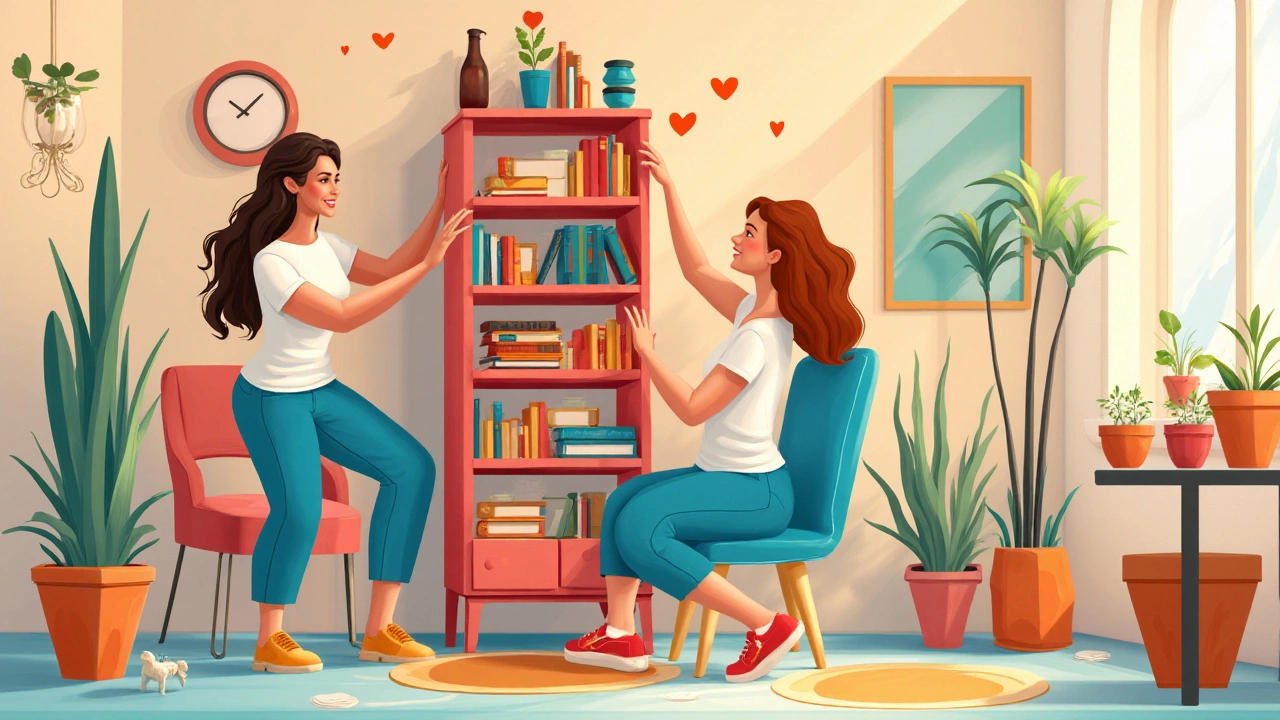
Special Considerations for Renters
Renting a home presents its unique blend of challenges and opportunities, especially when it comes to making adjustments like securing a freestanding bookcase. Tenants often find themselves caught in a balancing act, striving to create a safe and personalized environment while adhering to the landlord's rules and property limitations. Though you might feel restricted, there's no need to sacrifice your space's safety or style due to rental constraints. Addressing the lack of solid anchoring surfaces and avoiding property damage are among the chief concerns for renters, leading to innovative solutions that cater to flexibility and practicality.
One of the key strategies for renters is embracing non-invasive methods that keep your bookcase secured without causing any lasting marks or damages, which could result in potential costs or penalties when it’s time to move out. Using specially designed, removable wall-mounting systems can be a great option. These systems use adhesives or suction-based technology, which secures your bookcase firmly while allowing for easy removal without residue. If you're worried about the adhesive strength, many manufacturers promise that their products are designed to hold significant weight, offering both peace of mind and stability. For those averse to adhesives, furniture straps that wrap around your bookcase and attach to existing fixtures or the wall itself might be suitable as well.
Another innovative solution is utilizing tension rods or poles, commonly used for curtains, which offer adjustable vertical support between the floor and ceiling, providing increased stability without needing to alter the walls themselves. This might be especially relevant in areas known for earthquakes, where added security can help prevent furniture from tumbling over. Rethink how you organize items on the shelves too—keeping heavier items on lower shelves can naturally lower the center of gravity, reducing the risk of toppling. A survey by the American Society of Home Inspectors found that 71% of renters acknowledged that their main safety concern was unsecured furniture—an issue easily mitigated with these simple yet effective strategies.
Carl Richards, a renowned financial columnist at The New York Times, once wisely observed, 'Constraints drive creativity.' Embrace these confines as a means to innovate rather than an obstacle to overcome.
If you're willing to engage in minor, reversible adjustments, consider installing small, discrete brackets at the top of your bookcase. These can be hidden with decorative items or paint once removed, and they offer excellent support without causing a fuss during move-out inspections. Always communicate with your landlord before proceeding with any modifications, even minor ones, for your security and peace of mind, ensuring clarity about what is and isn't permissible.
Creative Solutions for Stability
When it comes to securing your freestanding bookcase, injecting a bit of creativity can both enhance safety and add to the aesthetic appeal of your home. Stability does not always mean having to compromise on visual elegance; in fact, they can go hand in hand. If you are someone who loves a bit of DIY flair while ensuring that your bookcase doesn't tip over, there are plenty of inventive ways to achieve this balance.
One engaging way to bolster the stability of your bookcase is to incorporate it into the room's theme by using it as an anchor piece. Perhaps you've already chosen a specific style for your living room, like rustic or minimalist. You can use sturdy decorative brackets that complement the overall decor. These serve a dual purpose: providing extra support while adding a touch of elegance. Look for brackets made of wrought iron or polished brass that not only secure but also elevate the charm of your bookcase.
"The beauty of the space lies in its ability to combine safety with style," says renowned interior designer, Martha Healy.
Another creative idea is using tension rods as stabilizers. Tension rods are particularly useful in rented spaces where drilling walls is not an option. By placing these rods strategically between the top of the bookcase and the ceiling, you create a virtually invisible support structure that keeps everything in place. This way, even if a playful child or an adventurous pet nudges the unit, it remains steadfast. A quick trip to a local hardware store is all it takes to find the right rods tailored to your ceiling height and bookcase dimensions.
For those who are environmentally conscious, using reclaimed or recycled materials can offer both stability and sustainability. Consider lining the back of your shelves with reclaimed wooden planks or metal sheets. These additional elements provide weight at the base of the bookcase, lowering its center of gravity, thus promoting stability. What's more, they can be painted or finished to match the existing color scheme, seamlessly integrating them into the room's layout while being kind to the planet.
Sometimes a splash of old-school methodology can be incredibly effective too. Sand-filled bags placed on the lower shelves can act as invisible weighing agents, adding both mass and security. These bags can be neatly wrapped in fabric matching your room’s aesthetics or hidden inside decorative baskets, keeping the shelves looking neat and orderly. The additional weight helps to prevent the possibility of toppling, especially during the inevitable little bumps that happen during daily life.
If you’re in search of a more structural solution, custom-built shelving that fits around or above your bookcase can substantially increase its stability. Building additional shelves securely to the wall and aligning them with your freestanding bookcase can provide a cohesive unit that feels built-in without the commitment of permanent fixtures. This means your library room can ooze sophistication while keeping every book, trinket, and family photograph precisely in its intended place. Ultimately, these unique and creative solutions ensure that your freestanding bookcase remains not only a source of pride but a safe addition to your living space.
Maintaining Safety and Aesthetics
When it comes to maintaining the safety and look of your freestanding bookcase, it's vital to find that perfect balance where function meets style. Often, in our quest for safety, aesthetics take a backseat. But it’s perfectly feasible to maintain both. Start by choosing anchors that blend well with the color and material of your bookcase. For example, if your bookcase has a dark wood finish, using anchors or brackets in a complementary color like black or dark bronze can make them less noticeable, practically camouflaging the safety equipment. Most home improvement stores have a range of decorative anchors that serve a dual purpose—keeping your bookcase steady while adding an elegant touch.
On top of choosing the right tools, arrange your books and other items strategically. You can achieve aesthetically pleasing symmetry that's both stable and safe. Place heavier items on lower shelves to maintain a low center of gravity, reducing the risk of tipping. Personal collections like family photos or specific memorabilia can grace the higher shelves. This arrangement not only secures the bookcase but also gives you a chance to talk about your favorite tales to anyone who visits. Martha Stewart, an acclaimed home improvement guru, often highlights tip number seven from her bookshelf safety guide: 'Incorporate furniture restraints that blend seamlessly with your decor.' These details can indeed be the visual cherries on top!
When planning, lighting plays an essential role—lighting can draw attention to what should be seen, instead of the safety tools. Install subtle LED strip lights under each shelf or use standalone lamps for a dramatic but warm display. This can help make your bookcase not just a storage unit but a focal point in your room. Additionally, saving space by mounting the bookcase around striking art or lively green plants can naturally draw the eyes away from the functional elements you’ve put in place for safety.
Continuing on the note of aesthetics, think about color coordination. Open shelving allows visibility, so curate the collection meticulously. Keep the book jackets intact and play with varying heights and patterns to form visual engagement. This, coupled with the integration of similarly colored bookends, can prevent books from toppling over unexpectedly, thus aiding in keeping your bookcase safe without sacrificing aesthetics. An alarming statistic shows that unsecured furniture still poses significant threats in households with children; structurally sound yet visually blended bookcases are indeed an asset.
Moreover, stay updated with regular maintenance checks. Even when you’ve set it up perfectly, factors like moving, quakes, or shifting floors can subtly affect the bookcase’s balance over time. Typically, it’s good practice to evaluate every few months to make sure things haven’t gotten loose. A simple hand test to see if anything wobbles can save much trouble down the road. Swap out screws or brackets that show wear-and-tear, ensuring that the fixtures you’re using aren’t just safe but also match the updated looks or add-ons you may have introduced to the room.
Finally, always remember that safety doesn’t mean compromising on style. Through thoughtful planning, strategic adornment, and quality craftsmanship, your freestanding bookcase can become not just a repository but a centerpiece without posing risk. Prioritize a design that tells your story and shields your loved ones, for a bookcase that stands strong is indeed a reflection of a well-organized home. As author Seth Godin rightly notes, 'Safe is the new risky.' But with the right measures, safe can also be the new beautiful.
